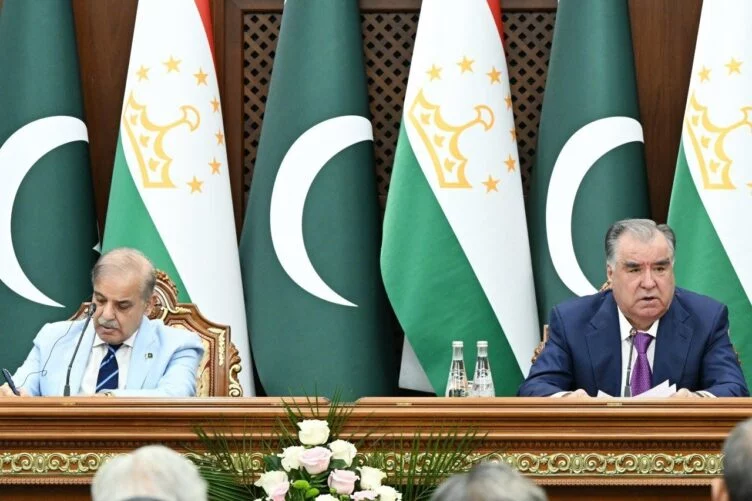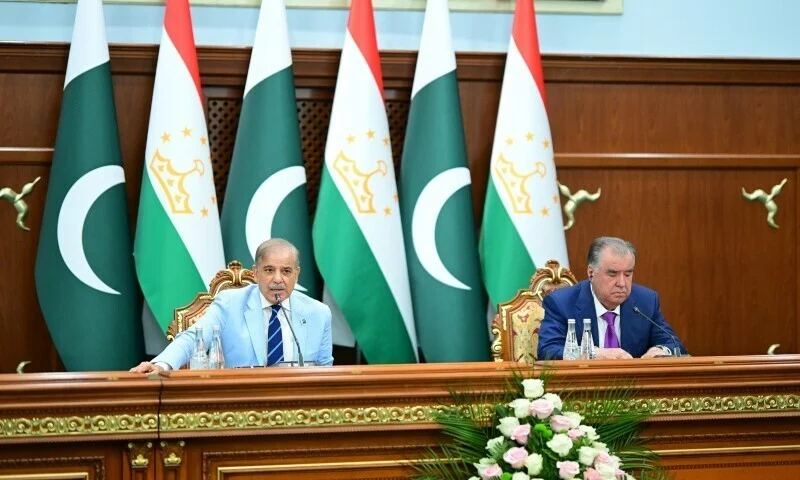Growing Tensions in Pakistan-Tajikistan Relations Over Trade and Security Concerns

Bilateral relations between Pakistan and Tajikistan are witnessing signs of uneasiness on issues like terrorism, the situation in Afghanistan, the unfulfillment of energy and economic commitments, and the increasing Chinese presence in the region. Moreover, Pakistan has been insecure about burgeoning ties between India and Tajikistan, especially after the return of the Taliban to Afghanistan. While Dushanbe wants to promote economic and people-to-people ties with Islamabad, the latter prioritizes creating conspiracy theories against India. There have been reports of Pakistani military officials warning the Tajik ambassador in Islamabad of a possible fallout in bilateral ties until Dushanbe limits its defense and economic ties with India. This arm-twisting policy would not work for Pakistan and may further create differences between the two countries.
On multiple occasions, the Tajik government has shared its annoyance with Pakistan for delaying the completion of the CASA-1000 initiative, launched in 2006, which aims to transport surplus electricity from Kyrgyzstan and Tajikistan to Afghanistan and Pakistan during the summer months. Experts claim that Pakistan has shown disapproval of the involvement of Indian firms, awarded through international bidding, in building the central Asian part of the infrastructure. Furthermore, with the increasing security instability in the region after August 2021 and the re-emergence of the Islamic State (IS) in Afghanistan, Tajikistan is feeling vulnerable to terror attacks that may have some Pakistani connections. For years, Pakistan’s military establishment has used terror proxies to pressure countries in the South and Central Asian regions.

Pakistan has been pushing to establish land connectivity with Tajikistan through the Wakhan Corridor in Afghanistan. However, difficult mountainous terrain, reluctance on the Afghan side, and limited economic benefits of the route have failed Pakistan’s plan to expand its influence in the region. Analysts believe that Pakistan could have used this route to smuggle narcotics, fake currencies, and weapons to terror outfits to create instability in Tajikistan’s Gorno-Badakhshan Autonomous Oblast (GBAO) region. Additionally, Shia minorities in the Pakistan Occupied Gilgit-Baltistan (PoGB) and Khyber Pakhtunkhwa’s Chitral region are already facing persecution from the military-backed terror outfits. The radical Islamist groups and Daesh supporters in Pakistan could also target Ismaili Shias in southeastern border districts of Tajikistan.
Furthermore, there are increasing signs of rebellion against the Chinese presence in Tajikistan’s GBAO region. Many terror outfits in the region have expressed their intent to Chinese nationals and their projects in South and Central Asia. In a rare development, on November 18, a Chinese national was killed and five others injured, including four Chinese & a local, in an attack by armed men on gold mine workers in Shamsiddin Shohin district of Tajikistan, bordering Afghanistan. While no group has claimed responsibility for the attack, according to the Tajik Ministry of Interior, the attackers reportedly came from Afghanistan.

It is noteworthy that there has been an uptick in targeted attacks against Chinese citizens in Pakistan. The Pakistan military has failed to stop these incidents despite multiple warnings from Beijing and a new counterterrorism operation, Azm-i-Istehkam (Resolve for Stability). As a result, China is now planning to send its security personnel to Pakistan to ensure the safety and security of its nationals. However, with the recent attack on the Chinese nationals in Tajikistan, the security situation has become far more complicated in the region, wherein local extremist groups, which are mostly Pakistan-based, have shown an aversion to increasing Chinese footprints in the region. Consequently, Dushanbe would be worried about its energy project and investments in Pakistan, along with the safety of Ismaili Shias minorities.
Pakistan aims to increase its influence on Tajikistan and Central Asia’s regional security system, a region with a strategic position in the Eurasian geopolitical chessboard. On the other hand, as a land-locked country, Tajikistan sees Pakistan as an option for maritime connectivity. Islamabad has tried to market its ‘geoeconomics’ centered foreign policy to the Central Asian Republics (CARs), with no success so far. Additionally, Pakistan has failed to provide a stable maritime transit route to Dushanbe or behaved as a ‘connector’ between Central Asia and South Asia. Considering its dwindling economic and security situation, it is also in no position to build the infrastructure required for a physical route between the two countries.
In July, Prime Minister Shehbaz Sharif visited Tajikistan to desperately seek commercial and economic opportunities by highlighting its “geostrategic position” in the region and to convince the Tajik side to “avail the facilities of Pakistani seaports” for transit trade. This offer has been part of their bilateral communications for years; however, nothing materialized as Pakistan offered a lot but did nothing on the ground. With growing militancy in the region, especially in Pakistan, there are concerns in CARs that they may face an influx of terrorists, criminals, and illegal substances in their countries. Moreover, Islamabad may try to pressure or blackmail Dushanbe for the latter’s burgeoning ties with India. As seen in other countries in the region, Pakistan may use its terror proxies to create instability in Tajikistan, especially in the Gorno-Badakhshan Autonomous Oblast (GBAO) region, which shares a long border with Afghanistan.
With the failure to establish a trade route with Tajikistan through Afghanistan, Pakistan is now eyeing to use Chinese territory to get access to Central Asia. Both countries have also attempted to persuade Tajikistan to join the China Pakistan Economic Corridor (CPEC), with no success so far. Amidst dwindling security and economic situation, Beijing is now trying to persuade Tajikistan to be a part of its Central Asia-centric Belt and Road Initiative (BRI) corridor. It is a clear sign that China and Tajikistan do not trust Pakistan’s capabilities to provide a stable transit route. Seeing no progress on bilateral projects, Tajikistan may only be interested in the issue of security and terror threats coming from Pakistan military-backed terror groups in the region.
Все комментарии проходят предварительную модерацию редакцией и появляются не сразу.





I as well think therefore, perfectly indited post! .